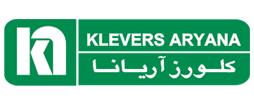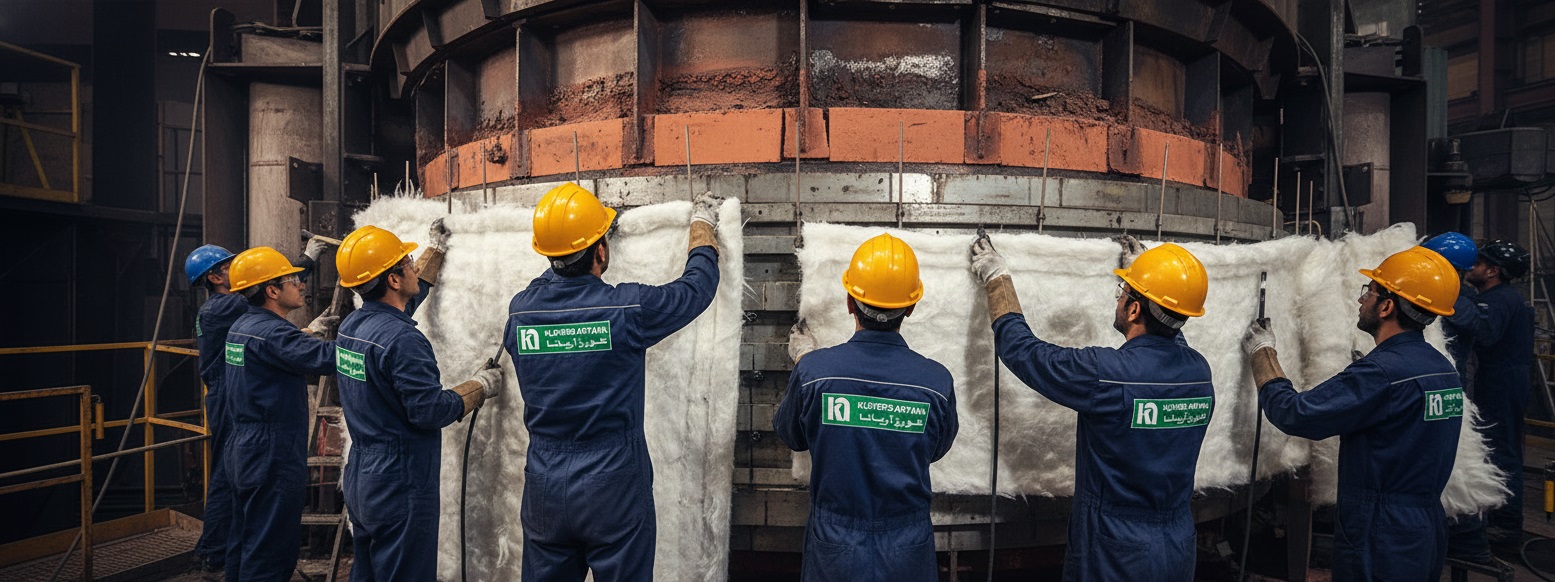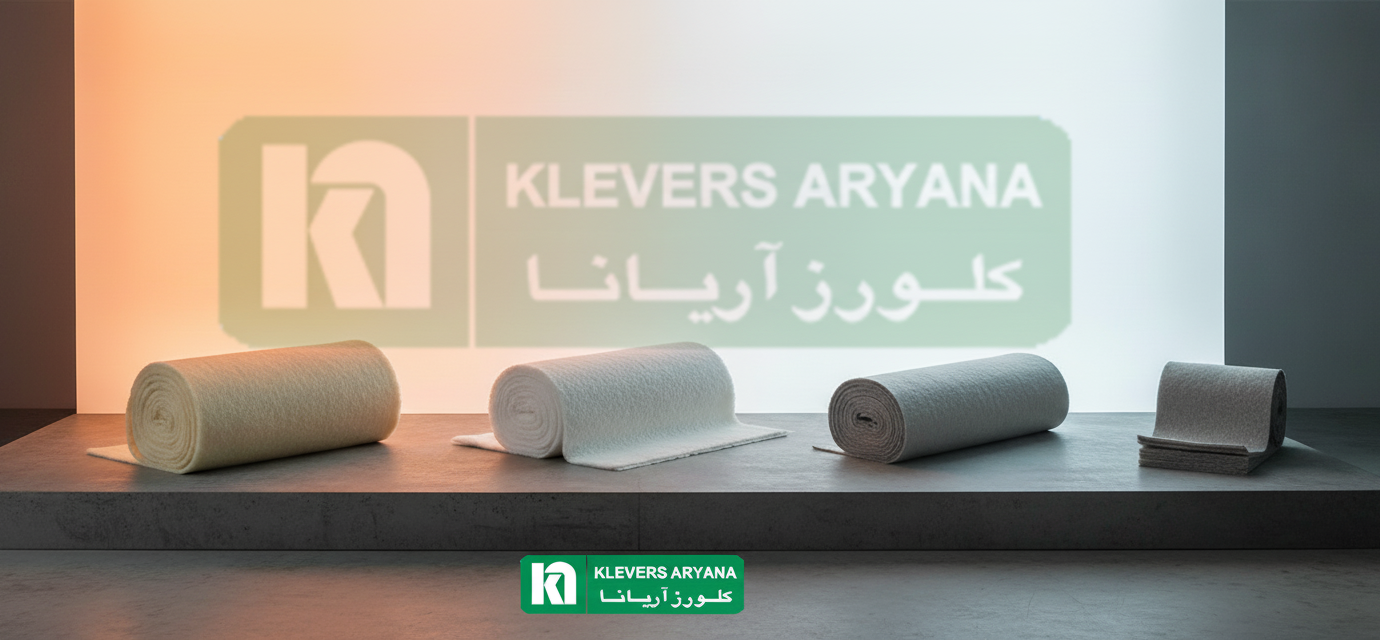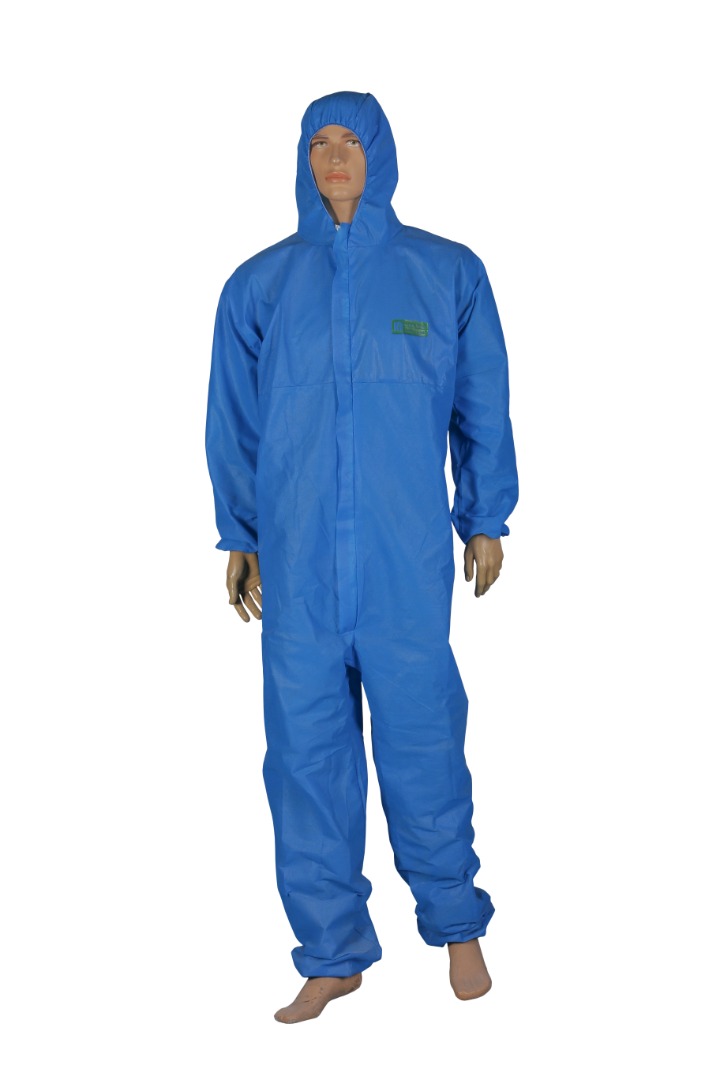Introduction: The Critical Importance of Fire Protection in Strategic Industries
Fire incidents in industrial facilities, especially in oil, gas, and petrochemical industries, are among the most dangerous events that can cause irreversible human, financial, and environmental damage. According to global reports, industrial fires cost billions of dollars annually in damages and endanger many lives. In this context, UL1709 fire protection insulation (Passive Fire Protection) stands as one of the most advanced safety systems recognized as a primary defense line against hydrocarbon fires in industrial settings.
This article provides a comprehensive guide on UL1709 fire protection insulation, covering its features, standards, benefits, and applications across various industries. It also introduces Klevers Aryana Company—the first and only manufacturer of this type of insulation in Iran—and highlights the importance of adopting this advanced technology to enhance industrial safety within the country.
UL1709 Standard: A Stringent Criterion for Fire Safety
Definition and Importance of the UL1709 Standard
The UL1709 standard, developed by Underwriters Laboratories (UL), is one of the strictest international standards for testing the fire resistance of materials under hydrocarbon fire conditions. Officially titled “Standard for Rapid Rise Fire Tests of Protection Materials for Structural Steel,” it is widely recognized [1].

According to this standard, protective materials must be capable of withstanding extremely high temperatures (up to 1093°C or 2000°F) for at least 30 minutes. This test is far more rigorous than standard fire tests (such as ASTM E119), as in hydrocarbon fires, temperatures reach their peak in less than 5 minutes [2].
Differences Between UL1709 and Other Fire Resistance Standards
The UL1709 standard differs significantly from other fire resistance standards:
| Standard | Heat Curve | Maximum Temperature | Main Application |
|---|---|---|---|
| UL1709 | Rapid rise (under 5 minutes) | 1093°C (2000°F) | Petroleum, gas, petrochemical industries |
| ASTM E119 | Gradual rise | 927°C (1700°F) | Residential and commercial buildings |
| ISO 834 | Gradual rise | 1049°C (1920°F) | Public buildings |
| Hydrocarbon Curve | Moderate rise | 1100°C (2012°F) | Marine installations |
These differences demonstrate why UL1709 fire protection insulation is critically important for high-risk industries such as oil, gas, and petrochemicals, and why lower-standard fire insulation cannot be used in these sectors. For further information on types of thermal insulation, please refer to specialized articles.
Working Mechanism of UL1709 Fire Protection Insulation
Structure and Components
UL1709 fire protection insulation consists of several advanced layers, each playing a vital role in protecting steel structures from fire:
- Outer resistant layer: Made of special flame-resistant fabrics with high resistance to direct flame exposure.
- Insulating middle layer: Contains advanced thermal insulation materials such as ceramic fibers, aerogels, or specially formulated mineral substances with very low thermal conductivity.
- Heat reflective layer: Heat-reflecting foils that reflect radiant heat waves.
- Inner protective layer: Directly contacts the metal surface and prevents heat transfer to the structure.
This complex multi-layer design is carefully engineered to ensure structural protection even under the harshest fire conditions [3].
How Steel Structures Are Protected
The working mechanism of UL1709 fire protection insulation is based on several physical principles:
- Preventing direct flame contact: The outer layer prevents direct flame exposure to the structure.
- Reducing conductive heat transfer: Insulating layers minimize heat transfer through conduction.
- Reflecting thermal radiation: Reflective layers bounce back thermal radiation.
- Absorbing thermal energy: Some materials in the insulation absorb heat energy and undergo phase changes to prevent heat transmission.

This combined performance ensures that the temperature of the steel structure remains within a safe range (below 400°C), even if the fire temperature reaches over 1000°C. This allows sufficient time for personnel evacuation and firefighting efforts. To learn more about jacketed thermal insulations, please visit the product page.
Applications of UL1709 Fire Protection Insulation in Various Industries
Oil, Gas, and Petrochemical Industries
UL1709 fire protection insulation has widespread applications in the oil, gas, and petrochemical industries, including:
- Refineries: Protecting distillation columns, storage tanks, pipelines, and steel structures
- Offshore platforms: Protecting critical equipment on marine platforms
- Petrochemical complexes: Protecting reactors, heat exchangers, and piping systems
- Gas compressor stations: Protecting compressors and key equipment

Application of fire protection insulation in petrochemical facilities
In these industries, the presence of flammable and explosive materials greatly increases the risk of fire. Using UL1709 fire protection insulation can prevent fire spread and minimize damage [4].
Power Plants and Energy Industries
In power plants and energy industries, UL1709 fire protection insulation is used to protect:
- Gas and steam turbines
- Boilers and steam generators
- Fuel transfer lines
- Sensitive electrical transformers and equipment
Fire-related shutdowns in these industries can lead to widespread outages and massive economic losses. To learn more about the application of thermal insulation in power plants, please refer to our technical articles.

Steel and Metal Industries
In steel and metal industries, UL1709 fire protection insulation is used to protect:
- Furnaces
- Molten material transfer systems
- Main factory steel structures
- High-temperature heating equipment
The high temperatures and presence of molten materials in these industries increase fire risk and spread. Expansion joints are also important products in these industries.
Benefits of Using UL1709 Fire Protection Insulation
Enhanced Safety and Protection of Human Life
The most important benefit of using UL1709 fire protection insulation is increased safety and life protection. These insulations:
- Provide adequate evacuation time: Delaying heat transfer gives people more time to evacuate safely.
- Reduce fire spread: Prevents fire from spreading to other areas.
- Prevents structural collapse: Maintains the integrity of steel structures, preventing collapse and secondary accidents.
- Reduces respiratory injuries: Reduces smoke and toxic gases, minimizing health risks.
Studies show that using UL1709 fire protection systems reduces fatalities in industrial fires by up to 60% [5].
Asset Protection and Financial Loss Reduction
Economically, using UL1709 fire protection insulation offers significant advantages:
- Reduces equipment damage: Expensive and critical equipment is protected from fire damage.
- Reduces production downtime: Faster return to operations due to reduced damage.
- Reduces reconstruction costs: Post-fire rebuilding expenses are significantly reduced.
- Lowers insurance premiums: Insurance companies charge lower premiums for facilities equipped with UL1709 fire protection systems.
Cost-benefit analysis shows that investing in UL1709 fire protection systems yields a high return on investment and substantial financial savings in case of an incident.
Compliance With International Standards and Legal Requirements
Using UL1709 fire protection insulation helps companies comply with international standards and legal requirements:
- API requirements: American Petroleum Institute (API) mandates the use of UL1709 fire protection systems in oil facilities.
- NFPA standards: National Fire Protection Association (NFPA) recommends the use of these systems.
- Insurance company requirements: Many insurers make coverage conditional upon the use of standard fire protection systems.
- HSE regulations: Health, Safety, and Environment (HSE) laws in many countries mandate the use of these systems.
To learn more about industrial safety standards, please visit the certification section.
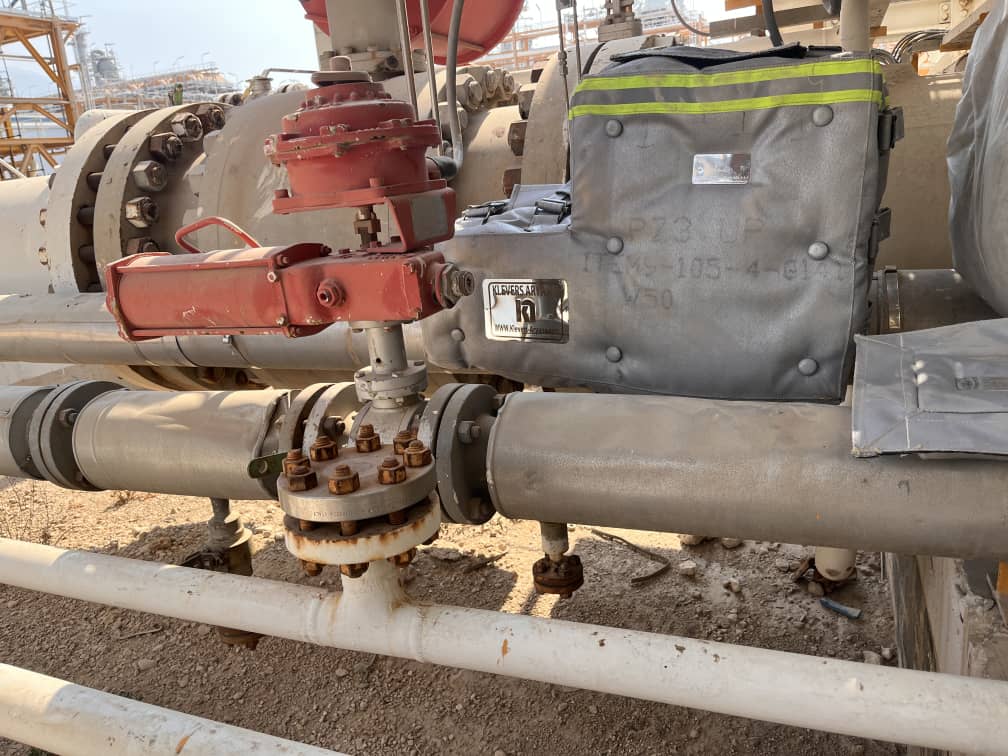
Selecting and Correct Installation of UL1709 Fire Protection Insulation
Factors Affecting the Selection of the Right Insulation
Selecting the appropriate UL1709 fire protection insulation depends on multiple factors:
- Type of equipment and structure: Dimensions, shape, and usage of equipment affect the choice of insulation.
- Environmental conditions: Whether the insulation will be installed indoors, outdoors, in corrosive or humid environments affects selection.
- Degree of required resistance: Based on risk assessment, you may need 1, 2, or 4-hour resistance.
- Need for periodic inspection: Some equipment requires regular inspections, so removable insulation should be used.
- Weight limitations: In some structures, weight is a limiting factor.
Standard Installation Process
Proper installation of UL1709 fire protection insulation is crucial and must be carried out by trained specialists. The installation process includes the following steps:
- Surface preparation: Cleaning, rust removal, and applying anti-corrosion coating if necessary
- Precise measurement: Measuring equipment accurately for insulation design
- Insulation design: Designing insulation according to equipment dimensions and shape
- Cutting and sewing: Cutting and stitching different insulation layers
- Installation and securing: Installing the insulation on equipment and securing it with clamps, fasteners, or other methods
- Sealing: Sealing seams and connections to prevent moisture ingress
- Final inspection: Quality inspection and confirmation of compliance with standards
Maintenance and Periodic Inspection
To ensure proper performance of UL1709 fire protection insulation, periodic inspection and maintenance are essential:
- Regular visual inspection: Checking for visible damage, tears, wear, and moisture ingress
- Periodic testing: Evaluating insulation properties and fire resistance
- Replacing damaged parts: Replacing damaged sections of the insulation
- Documentation: Recording all inspections and repairs for tracking and auditing purposes
Conducting these inspections can extend the useful life of the insulation and ensure proper performance when needed. To learn more about installation and execution services, please visit the services section.
Case Studies and Practical Experiences
Successful Examples in Iranian Industries
The use of UL1709 fire protection insulation in Iranian industries has shown a growing trend. Some successful examples include:
- Persian Gulf Star Refinery: Use of UL1709 fire protection insulation in critical refinery sections has enhanced safety and reduced risk.
- Jam Petrochemical Complex: In this complex, the use of UL1709 fire protection insulation played a major role in protecting reactors and storage tanks containing hazardous materials.
- Damavand Combined Cycle Power Plant: Use of this insulation in turbine and boiler protection has improved safety and power generation stability.
Lessons Learned From Real Incidents
Analysis of fire incidents in industries shows that:
- Bu-Ali Sina Petrochemical Incident (2016): Lack of standard fire protection insulation was one of the reasons for fire spread and heavy damages.
- Tehran Refinery Fire (2019): Areas where UL1709 fire protection insulation was used experienced significantly less damage.
- SPD13 Offshore Platform Incident (2020): Proper protection with UL1709 insulation prevented fire from spreading to critical sections.
These experiences show that investing in standard fire protection systems is a vital necessity in high-risk industries—not just an additional expense.
Klevers Aryana: The First Manufacturer of UL1709 Fire Protection Insulation in Iran
Introducing Klevers Aryana Company
Klevers Aryana Company, with over 20 years of experience in designing and manufacturing various industrial insulations, is the first and only manufacturer of UL1709 fire protection insulation in Iran. As the exclusive representative of Klevers Germany and Resimac UK, the company has always been a pioneer in providing innovative solutions in the insulation industry.
Klevers Aryana produces world-standard products tailored to meet the needs of various industries in the country by relying on the expertise of its specialists and using high-quality European raw materials.
Specialized Services and Products in Fire Protection
Klevers Aryana offers comprehensive services in fire protection:
- Design and engineering: Custom fire protection system designs for specific project needs
- Manufacturing: High-quality UL1709 fire protection insulation produced to global standards
- Installation: Professional installation by experienced and trained teams
- Inspection and maintenance: Periodic inspection and maintenance services to ensure proper function
- Consultation: Expert consultation in fire safety and protection
Contact Experts and Request Consultation
To learn more about UL1709 fire protection insulation and other Klevers Aryana products, you can contact our experts:
- Phone: 91305505 – 021
- Email: info@klevers-aryana.com
- Address: Tehran, below Parke Vey Intersection – opposite IRIB headquarters – Shahnawaz (Golestan) Alley, No. 106
Our experts are ready to answer your questions and provide professional consultation. To contact us and request free consultation, please visit this link.
Conclusion and Final Recommendations
UL1709 fire protection insulation is a vital technology in high-risk industries that can protect human lives, equipment, and large investments. In today’s world, where industrial safety is a fundamental priority, using standard fire protection systems is an undeniable necessity.
Klevers Aryana, as the first manufacturer of UL1709 fire protection insulation in Iran, takes pride in contributing to increased safety in Iranian industries by offering high-quality, globally certified products. Given the critical role of this product in preventing life and financial losses, it is recommended that high-risk industries conduct a comprehensive evaluation of their needs and adopt standard fire protection systems.
Sources and References
[1] UL Solutions. (2019). Best Practice Guide for Passive Fire Protection for Structural Steelwork. UL. https://www.ul.com/sites/g/files/qbfpbp251/files/2019-04/Best-Practice-Guide-for-Passive-Fire-Protection-for-Structural-Steelwork.pdf
[2] UL Research. (2015). The Protection of Structural Steel in Hydrocarbon Fires. UL. https://code-authorities.ul.com/wp-content/uploads/sites/40/2015/03/144182614.pdf
[3] Research Authors. (2023). The Behavior of Passive Fire Protection Materials Used for Fire Protection of Steel Structures. ResearchGate. https://www.researchgate.net/publication/371577239_The_Behavior_of_Passive_Fire_Protection_Materials_Used_for_Fire_Protection_of_Steel_Structures_in_Standard_Hydrocarbon_and_Jet_Fire_Exposure
[4] Various Authors. (2009). Fire resistance of passive fire protection coatings after long-term weathering. ScienceDirect. https://www.sciencedirect.com/science/article/abs/pii/S0957582009000937
[5] UniTherm. (2024). UL1709 Standards in Refineries and Chemical Plants. UniTherm. https://www.unitherm.com/ul1709-standards-in-refineries-and-chemical-plants/
[6] Metraflex. (2024). ASTM F-1120 VS ASTM F-2934 Expansion Joints Compliance. Metraflex. https://www.metraflex.com/astm-f/
[7] Firwin Corporation. (2024). Removable Insulation Jackets. Firwin. https://www.firwin.com/insulation-jackets/
[8] ASTM International. (2015). ASTM F1120-87 Standard Specification for Circular Metallic. ASTM. https://standards.iteh.ai/catalog/standards/astm/7f5bf6a9-e638-4b12-9678-c523cad0ed01/astm-f1120-872015
[9] Thermaxx Corporation. (2024). Removable Insulation Blankets & Covers. Thermaxx. https://www.thermaxxjackets.com/
[10] MMP Group. (2024). Refractory Materials in the Petrochemical Industry. MMP Group. https://mmpgroup.co.in/Petrochemical-Industry.html
